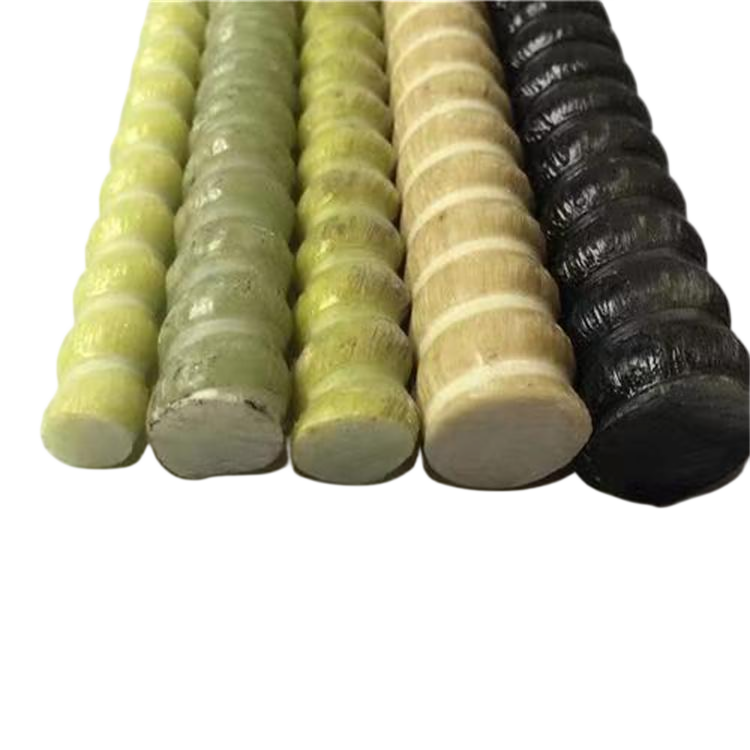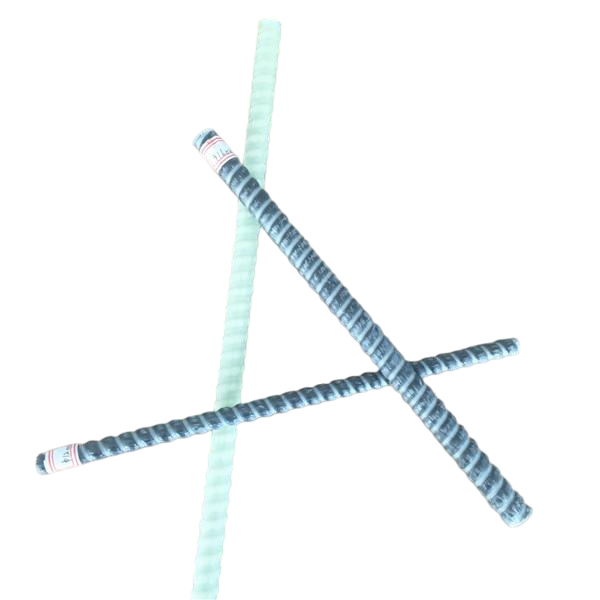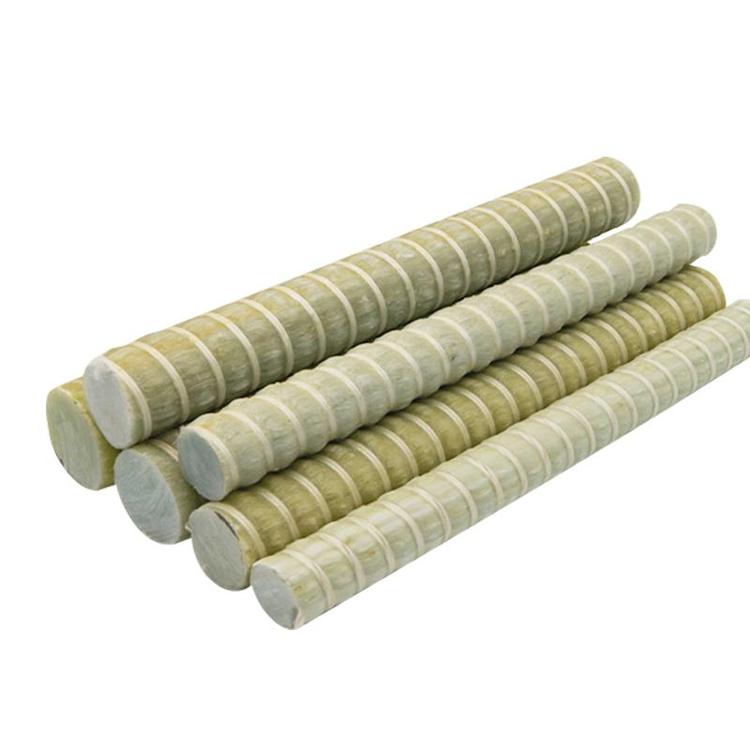Introduction
Glass Fiber Reinforced Polymer (GFRP) bolts have revolutionized the engineering and construction industries with their exceptional mechanical properties and versatility. As a non-metallic alternative to traditional steel bolts, GFRP bolts offer superior corrosion resistance, high tensile strength, and reduced weight. These advantages have led to their widespread adoption across various sectors, including civil engineering, mining, marine applications, and renewable energy. The purpose of this article is to provide a comprehensive analysis of the applications of GFRP Bolt in different industries, highlighting their benefits, challenges, and future prospects.
Civil Engineering Applications
In civil engineering, the use of GFRP bolts has become increasingly prevalent due to their non-corrosive nature and high strength-to-weight ratio. Bridges, tunnels, and retaining walls are structures that greatly benefit from GFRP bolts. For instance, in bridge construction, GFRP bolts are utilized to secure structural components, providing longevity and reducing maintenance costs associated with corrosion damage. A study conducted by the American Society of Civil Engineers (ASCE) demonstrated that bridges reinforced with GFRP bolts exhibited a 25% increase in service life compared to those using traditional steel bolts.
In tunnel construction, GFRP bolts are essential for rock stabilization and ground support. Their electromagnetic neutrality makes them ideal for use in environments where electromagnetic interference needs to be minimized, such as in subway systems. Additionally, the lightweight nature of GFRP bolts reduces the overall load on structures, enhancing safety and performance.
Case Study: The Use of GFRP Bolts in the Channel Tunnel
The Channel Tunnel between the United Kingdom and France is a prime example of GFRP bolts in action. Engineers selected GFRP bolts for rock bolting and reinforcement to counteract the corrosive subterranean environment. Over 10,000 GFRP bolts were installed, resulting in enhanced durability and safety of the tunnel structure. The long-term performance data indicates minimal degradation over 20 years, underscoring the reliability of GFRP bolts in such demanding conditions.
Mining Industry Applications
The mining industry relies heavily on rock bolts for ground support in underground mines. GFRP bolts have emerged as a superior alternative to steel bolts due to their corrosion resistance, which is critical in the moist and chemically aggressive environments typical of mines. Moreover, the non-conductive nature of GFRP bolts enhances safety by reducing the risk of electrical hazards.
A report by the International Journal of Rock Mechanics revealed that mines employing GFRP bolts experienced a 30% reduction in maintenance costs. Additionally, the ease of cutting GFRP bolts without generating sparks is beneficial during mine expansion or when installing machinery, further contributing to operational safety.
Enhancing Mine Safety with GFRP Bolts
Safety is paramount in mining operations. GFRP bolts contribute to safer mining environments by maintaining structural integrity and reducing the likelihood of collapses. Their high tensile strength ensures effective support of rock masses, while their resistance to acidic and alkaline conditions prevents premature failure. Mines in Australia and Canada have reported improved safety records after transitioning to GFRP bolts, highlighting their importance in modern mining practices.
Marine and Offshore Applications
In marine environments, corrosion is a persistent issue affecting the longevity of structures. GFRP bolts offer an ideal solution due to their inherent resistance to saltwater corrosion. They are extensively used in the construction of docks, piers, offshore platforms, and seawalls. The use of GFRP bolts in these structures extends their service life and reduces the need for frequent repairs.
For example, the Petronas Twin Towers' offshore oil platforms utilize GFRP bolts to secure critical components. The bolts have performed exceptionally well under harsh marine conditions, withstanding high salinity and continuous exposure to seawater without significant deterioration. This application underscores the reliability and durability of GFRP bolts in marine settings.
Advantages in Shipbuilding
Shipbuilders have adopted GFRP bolts for assembling various ship components where weight reduction is desired without compromising strength. The lower weight of GFRP bolts contributes to improved fuel efficiency and stability of vessels. Furthermore, their non-magnetic properties prevent interference with navigational equipment, an essential factor in modern ship design.
Renewable Energy Sector Applications
The renewable energy industry, particularly wind energy, has seen a surge in the use of GFRP bolts. Wind turbine towers and blades benefit from the lightweight and high-strength properties of GFRP materials. Bolts made from GFRP are used to assemble turbine components, ensuring structural integrity while minimizing the overall weight.
In solar power installations, GFRP bolts are used in mounting systems that support solar panels. The durability and corrosion resistance of GFRP bolts are crucial for outdoor installations exposed to varying weather conditions. A study by the National Renewable Energy Laboratory (NREL) indicates that GFRP bolts can extend the lifespan of solar mounting systems by up to 15 years compared to traditional materials.
Case Study: Wind Turbine Foundations
The use of GFRP bolts in the foundations of wind turbines has been instrumental in reducing maintenance costs and enhancing performance. In the North Sea offshore wind farms, GFRP bolts withstand the corrosive marine environment while providing the necessary structural support. The successful deployment in these projects has led to broader acceptance of GFRP bolts in renewable energy applications.
Transportation Infrastructure Applications
GFRP bolts are increasingly used in transportation infrastructure, including highways, railways, and airports. Their corrosion resistance is particularly beneficial in regions where de-icing salts are used, which can accelerate the corrosion of steel components. GFRP bolts help maintain the integrity of overpasses, noise barriers, and retaining walls, ensuring the safety and longevity of transportation networks.
In airport construction, GFRP bolts are used to assemble terminal structures and runways. Their non-conductive properties prevent interference with sensitive aviation instruments. Furthermore, the reduced maintenance requirements of GFRP bolts minimize operational disruptions, a critical factor in the high-traffic environment of airports.
Enhancing Highway Durability
The incorporation of GFRP bolts in highway construction has been shown to significantly improve durability. A project in Michigan, USA, replaced steel bolts with GFRP bolts in bridge decks. After a decade of service, inspections revealed that the GFRP-reinforced structures exhibited no signs of corrosion, whereas traditional steel-reinforced structures showed considerable degradation. This evidence supports the long-term economic and safety benefits of using GFRP bolts in transportation infrastructure.
Industrial and Chemical Applications
In industrial settings, especially in chemical plants, the corrosion of metallic fasteners can lead to catastrophic failures. GFRP bolts are resistant to a wide range of chemicals, making them suitable for use in such environments. They are employed in the assembly of storage tanks, piping systems, and equipment that handle corrosive substances.
For instance, a chemical processing facility in Germany reported a 40% reduction in maintenance downtime after switching to GFRP bolts. The bolts' ability to maintain mechanical integrity in the presence of harsh chemicals ensured continuous operation and improved safety for plant personnel.
Application in Wastewater Treatment Plants
Wastewater treatment plants are environments where exposure to moisture and chemicals is constant. GFRP bolts are used extensively in these facilities to secure grating, ladders, handrails, and equipment. Their durability in such corrosive environments reduces the need for frequent replacements and enhances the overall reliability of the treatment processes.
Challenges and Considerations
While GFRP bolts offer numerous advantages, there are challenges associated with their use. One of the primary considerations is the initial cost, which can be higher than that of traditional steel bolts. However, life-cycle cost analyses often demonstrate that the reduced maintenance and longer service life of GFRP bolts result in overall cost savings.
Another challenge is the perceived lack of standardization. As GFRP technology is relatively newer compared to steel, industry standards and codes are still evolving. Engineers must be knowledgeable about the material properties and design considerations specific to GFRP bolts. Ongoing research and development aim to address these challenges by establishing comprehensive guidelines and improving manufacturing processes.
Material Properties and Design
Understanding the mechanical properties of GFRP bolts is crucial for safe and effective design. GFRP materials exhibit anisotropic behavior, meaning their strength and stiffness vary depending on the direction of the load relative to the fiber orientation. Designers must account for this behavior in their calculations. Advanced modeling techniques and testing protocols are being developed to facilitate accurate predictions of GFRP bolt performance under various loading conditions.
Future Prospects of GFRP Bolts
The future of GFRP bolts is promising, with ongoing advancements in material science and engineering expanding their applications. Innovations in manufacturing processes, such as pultrusion and filament winding, are enhancing the properties and reducing the costs of GFRP bolts. Additionally, the growing emphasis on sustainable and resilient infrastructure supports the increased use of GFRP materials.
Research into hybrid composites, combining GFRP with other fibers like carbon or aramid, is leading to bolts with tailored properties for specific applications. These developments will further solidify the role of GFRP bolts in various industries and promote their adoption in new areas.
Environmental Impact and Sustainability
GFRP bolts contribute to sustainability through their longevity and reduced need for replacement. Fewer replacements mean less resource consumption and waste generation over a structure's life span. Additionally, advancements are being made in recycling technologies for composite materials, which will enhance the environmental friendliness of GFRP bolts. The push towards green building practices and materials is likely to increase the demand for GFRP solutions.
Conclusion
GFRP bolts have established themselves as a vital component in modern engineering and construction due to their superior properties and performance in challenging environments. From civil engineering to renewable energy, their applications are diverse and impactful. Despite challenges such as higher initial costs and evolving standards, the long-term benefits of using GFRP Bolt outweigh these hurdles. As industries continue to seek durable, cost-effective, and sustainable materials, GFRP bolts are poised to play an increasingly significant role in shaping the infrastructure of the future.




























